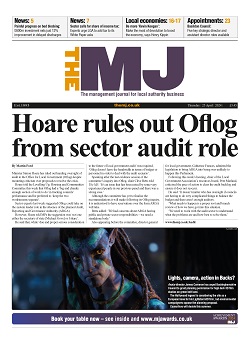‘If you go back to first principles, how do you build a council that can deliver services and be sustainable?’ That was the question Barking and Dagenham chief executive, Chris Naylor, asked when The MJ paid a visit to the east London borough in 2016.
The council was languishing at the bottom of the league tables for a number of key social issues it had failed to resolve during the relatively well funded early 2000s. It was facing massive population churn and demographic change and it was struggling to adapt.
Mr Naylor and council leader Darren Rodwell set about putting the council on a financially sustainable footing and expanding life chances for local people. A restructure and culture change programme was moving forward inside the council, while they set about building a sense of community, social responsibility and civic pride in the wider community.
Now the council is three years into a paradigm shifting change that the leader believes will take 20 years to deliver fully. While Mr Naylor suggests they have ‘done the heavy lifting on the restructure,’ there is still a long way to go.
Unlike the more high-profile Wigan Deal, where communications were a key part of the strategy to build an improvement partnership with the public, Barking and Dagenham has started with its internal structures and is now becoming more outward facing.
‘We weren’t proactive on the comms,’ Mr Naylor admits. ‘Even if we had wanted to be, we would have talked about a deal and everyone would have said “you’re not holding up your part of the bargain”.’ It was vital to get some of the services working more smoothly to build trust.’
When it comes to the council’s corporate plan, there are four themes: improving the council services; empowering people; inclusive growth; and building citizenship and participation.
As part of the shift in the culture of the council, Barking pledged to move towards municipal entrepreneurialism. Be First, the regeneration company, aims to build 50,000 new homes and create 20,000 new jobs in the next 20 years.
At Barking Riverside, it has made a considerable start. A new development in partnership with L&Q will create 10,800 new homes, with a new railway station due to be opened by 2021. The former brownfield site which used to be home to Barking Power Station will now become home to approximately 26,000 people in an area with a rapidly expanding population.
While London wrestles with its soaring knife crime, which is being attributed to the dwindling youth services provision, Barking and Dagenham is opening a new Youth Zone with an extraordinary array of facilities. From a climbing wall to a recording studio, a dance studio and well-being room, sports facilities and a full gym, it’s a far cry from the dusty community centres of old.
Officially opened by Prince Harry just a few weeks ago, it will cost £5 a year for membership and 50p a visit, with a hot meal for £1. It is an affordable place for young people to go. While the council has contributed capital towards building the facilities, the revenue is funded through a mix of charities and patrons.
Then there is the former Dagenham town hall – which saw protests and vigils when the council announced it was vacating. ‘We could have sold it to a hotel chain,’ Mr Naylor says. Instead, the council worked with Coventry University to turn the stunning art deco building into a campus offering largely vocational courses.
But perhaps the biggest move forward is the council’s partnership with Participatory City Foundation. A five-year programme of community building, based in a specially fitted out warehouse and a collection of community ‘shops’, the project brings together local people under the banner of Every One, Every Day.
The project invites local people to get involved in everything from skills swaps to cooking classes, from supporting business start-ups to growing veg – anything that brings people together.
Participatory City chief executive Tessy Britton suggests: ‘This idea isn’t new. For decades we’ve tried community empowerment but what is different is the scale of it.’
It has required significant investment – a total of £7.5m over five years, but not all of it is from the council – but she adds: ‘We think it will show itself to be a cheap way to build and sustain the community. If you get this right, it is for everyone.’
All the projects have two things in common. They are building on the aspiration of Barking and Dagenham but they are not ‘owned’ by the council. Instead they are partnerships and separate bodies which the borough has helped to flourish, and then stepped back.
In its corporate plan, the council says it aims to build a relationship with local people which moves away from being paternalistic to becoming ‘empowering’. It adds: ‘It is obvious that the council cannot .singlehandedly create a new relationship with residents. If our community is to be empowered, residents must take the lead.’
*Statistics from Barking and Dagenham’s No one left behind Corporate Plan 2018-22



